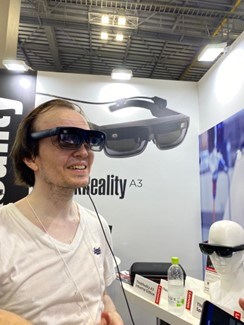Virtual Wonders of the East – XR Fair Tokyo Summer 2023
The highpoint of my summer holiday 2023 was the XR Fair exhibition organized June 28th – 30th at the enormous Tokyo Big Sight convention center in Tokyo, Japan. XR Fair is organized twice a year and it’s held together with five other exhibitions: Advanced Digital Technology Expo, Creators’ Expo, Licensing Japan, Production/Studio Expo and Ad Creative and Marketing Expo. Entrance to all the six exhibitions was available after free registration. Most of the XR/metaverse companies were in either XR Fair or Advanced Digital Technology Expo.
Right upon arriving to Tokyo Big Sight I was happy to see that the huge venue was full of visiting guests and at every booth there was some one speaking English! Also, there were plenty of hardware solutions such as VR and AR headsets, 3D light field displays, haptic gloves, and VR threadmills to try out. I must admit that one of my main motivations of going to XR/metaverse events is to test the latest gear, in addition naturally, I try to keep up with what is happening in the fast-emerging industry and to make useful connections for the Finnish XR and metaverse companies.
Here is a summary of the most noteworthy observations and conclusions I made during my day at Tokyo Big Sight:
AR/Smart glasses are here – or at least in Asia
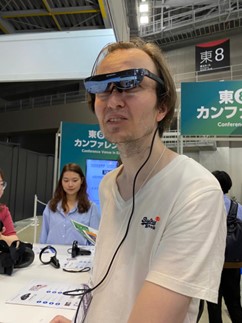 Consumer grade AR Glasses (or perhaps rather smart glasses) first became available as NReal Light (by XReal) was introduced in 2019, after this several new entrants have made it to the market: at least Rokid, TCL, Viture, ARknovv A1, and Skyworth. However, these glasses are 3 degrees of freedom glasses similar to the early VR headsets and are mostly good for replacing your TV or monitor or watching 3D movies.
Consumer grade AR Glasses (or perhaps rather smart glasses) first became available as NReal Light (by XReal) was introduced in 2019, after this several new entrants have made it to the market: at least Rokid, TCL, Viture, ARknovv A1, and Skyworth. However, these glasses are 3 degrees of freedom glasses similar to the early VR headsets and are mostly good for replacing your TV or monitor or watching 3D movies.
For industrial users there are also 6 degrees of freedom glasses available already, in these you can have virtual displays and objects at fixed positions around your room and interact with them with your hand gestures, one of these was Lenovo’s ThinkReality A3, which worked surprisingly well.
AI x metaverse
AI and ChatGPT has been front cover news for quite some time and Tokyo Big Sight is no exception. Several companies were developing platforms and solutions for various virtual customer service agents either in XR environments or as standalone signage solutions.
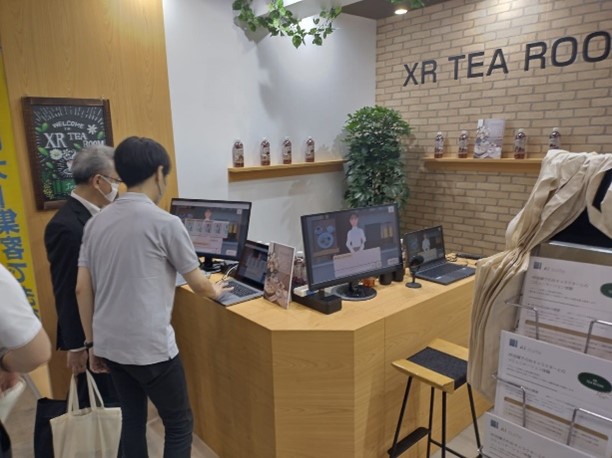
Metaverse is coming – both in VR and AR
Japanese HIKKY Co.Ltd has been developing several VR metaverses for quite some time already. They have developed for example Parareal Shibuya, Parareal Akihabara and Parareal New York City. HIKKY is working to redefine 100 cities as parallel cities in on the existing metaverse platforms such as VRChat. They are also organizing virtual markets or Vkets in the Metaverse. Another example of a VR metaverse city platform developer is a company called MetaTown.
More recently metaverse implementations have also been created in Augmented Reality at certain geographical locations and they can be viewed with mobile devices. One example is AIR RACE X by Styly that is held at Shibuya, Tokyo around one of the busiest street crossings in the world.
3D lightfield displays are coming affordable
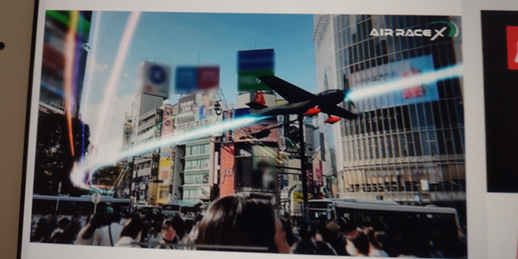 Being able to see 3D image floating in front of you without any glasses feels truly magical. The light field displays are not new inventions but until recently they have mostly been used to create the wow effect at exhibition booths. This was changed as ZTE introduced relatively affordable 3D tablet “Nubia Pad 3D” in spring 2023.
Being able to see 3D image floating in front of you without any glasses feels truly magical. The light field displays are not new inventions but until recently they have mostly been used to create the wow effect at exhibition booths. This was changed as ZTE introduced relatively affordable 3D tablet “Nubia Pad 3D” in spring 2023.
Industrial metaverse and digital twins are here to stay
I believe this observation is not a surprise for anyone. As I expected there were quite many companies exhibiting their digital twin and industrial metaverse solutions. These included for example LIDAR scanning based digital twins of real cities, Building Information Models (BIM) and training environments in hazardous situations.
Europe, wake up!
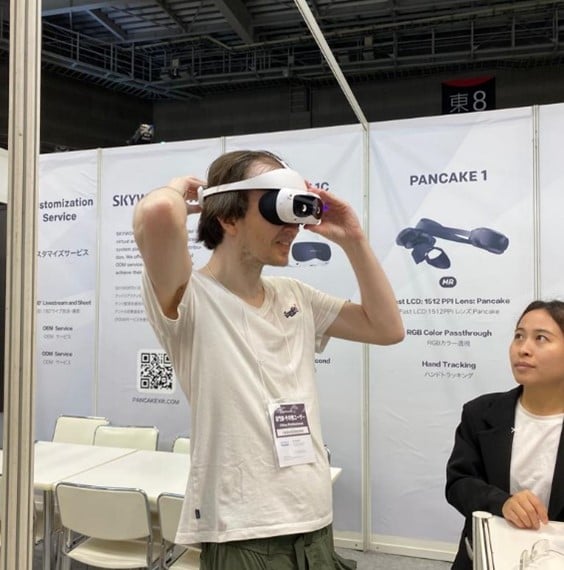 XR Fair was a great event and I thoroughly enjoyed myself, however, this feeling was mixed with a sense of worry about the future of Europe in the emerging Immersive Virtual Worlds and XR industry. Asian corporations such as Pico (part of ByteDance with TikTok), Sony, Lenovo, ZTE, Panasonic/Shiftall and SkyWorth had offerings that were pretty much on par, and in AR even seemed to exceed their US based competitors’ offerings. For example, a Chinese company Skyworth had several VR and AR headsets (also with advanced waveguide displays), own software and even their own appstore to be used as a distribution channel. This is quite impressive for a Chinese company that at least in Europe is largely unknown. China has also got very bold metaverse strategy and Chinese corporations are keen to do active cooperation. On the other hand, there were very few European companies present at the exhibition, despite of Asia’s growing weight in the world.
XR Fair was a great event and I thoroughly enjoyed myself, however, this feeling was mixed with a sense of worry about the future of Europe in the emerging Immersive Virtual Worlds and XR industry. Asian corporations such as Pico (part of ByteDance with TikTok), Sony, Lenovo, ZTE, Panasonic/Shiftall and SkyWorth had offerings that were pretty much on par, and in AR even seemed to exceed their US based competitors’ offerings. For example, a Chinese company Skyworth had several VR and AR headsets (also with advanced waveguide displays), own software and even their own appstore to be used as a distribution channel. This is quite impressive for a Chinese company that at least in Europe is largely unknown. China has also got very bold metaverse strategy and Chinese corporations are keen to do active cooperation. On the other hand, there were very few European companies present at the exhibition, despite of Asia’s growing weight in the world.
Luckily, the exhibition was not completely void of Europeans. At least Immersal was mentioned as one of the partners for a Japanese metacity developer, the Swedish based eye tracking company Tobii had their own booth, and I was really happy to see that Czech Republic had their own country booth with five XR companies and people from Invest in Czech! Go Czech! Also, I was happy to test for example French Lynx’s Lynx-r1 headset, which together with Varjo and Vrgineers is one of the few European headset developers.
Japan is Waiting for Finnish eXtended Reality
I am confident that Finnish XR companies would have a lot to offer to Japan and especially with the help of Business Finland’s advisors in Japan entrance to Japanese markets is a challenge worth taking. The language isn’t a barrier as both nations are known for their quiet people 😊 Hoping to see many more Finns at the XR Fair next time!
